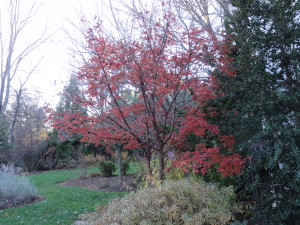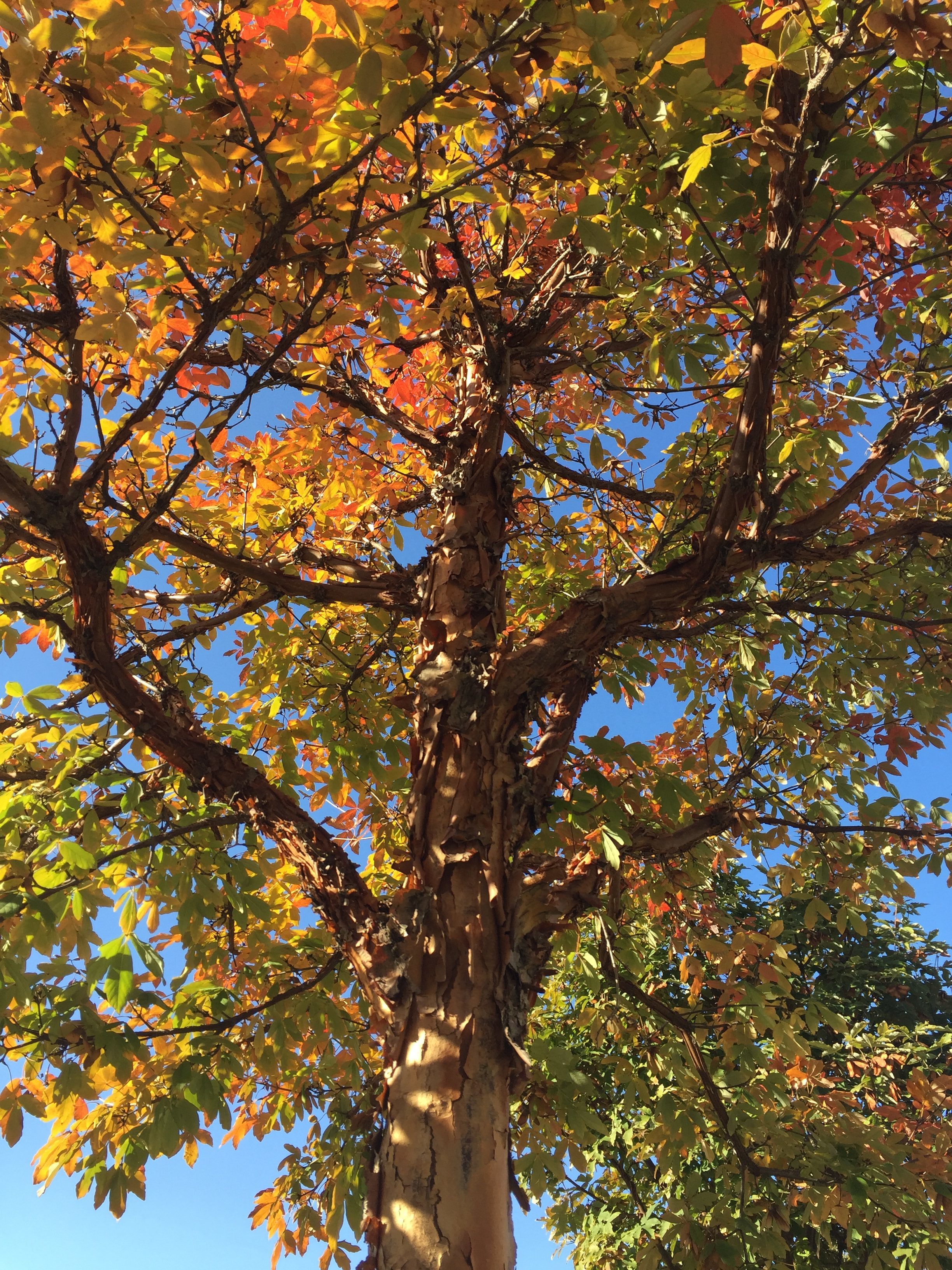
This species is not originally from North America. It is somewhat tolerant of urban pollution. The Embers and Flame varieties have especially vibrant fall colors in both leaves and fruit. It is not particular as to soil type or pH. Fall leaf color is red, with yellows sometimes also appearing. It prefers to grow in average to moist conditions, and shouldn't be allowed to dry out.
#Paperbark maple fall color full
This tree does best in full sun to partial shade. It grows at a slow rate, and under ideal conditions can be expected to live for 80 years or more. As it matures, the lower branches of this tree can be strategically removed to create a high enough canopy to support unobstructed human traffic underneath. It has a high canopy with a typical clearance of 6 feet from the ground, and should not be planted underneath power lines. Paperbark Maple will grow to be about 35 feet tall at maturity, with a spread of 20 feet. Paperbark Maple is recommended for the following landscape applications It has no significant negative characteristics. It has trifoliate, olive-green leaves (compound leaves arranged in clusters of three as seen in poison ivy) that turn orange, red or purple in the fall. This is a relatively low maintenance tree, and can be pruned at anytime. Paperbark maple ( Acer griseum) is a smallish, oval-shaped, low-branched deciduous tree growing to 40 feet high with distinctive, cinnamon-colored exfoliating bark. Its relatively fine texture sets it apart from other landscape plants with less refined foliage. Paperbark Maple is a multi-stemmed deciduous tree with a shapely oval form. The peeling antique red bark is extremely showy and adds significant winter interest. The compound leaves turn outstanding shades of orange and antique red in the fall. Paperbark Maple has dark green deciduous foliage on a tree with an oval habit of growth. This species is not originally from North America.This small ornamental tree is renowned for its exfoliating (peeling) bark in cinnamon red, pink and tan, along wth good fall color an extremely high value accent tree for the winter landscape It is not particular as to soil type or pH. Leaves turn an array of bright red and orange colors in the fall. It is a slow-growing deciduous tree that can grow. Paperbark maple displays excellent fall color. The Paperbark Maple, also known as Acer griseum, is a species of maple tree that is native to central China. It has a high canopy with a typical clearance of 6 feet from the ground, and should not be planted underneath power lines. Leaflets are dark green above with paler hairy undersides. Paperbark Maple will grow to be about 30 feet tall at maturity, with a spread of 25 feet.

This species is one of the last of the maples to develop fall color. Paperbark Maple is recommended for the following landscape applications In the fall the leaves turn a very nice orange to striking red color. This is a relatively low maintenance tree, and should only be pruned in summer after the leaves have fully developed, as it may 'bleed' sap if pruned in late winter or early spring.

This small ornamental tree is renowned for its exfoliating (peeling) bark in cinnamon red, pink and tan, along wth good fall color an extremely high value accent tree for the winter landscape


 0 kommentar(er)
0 kommentar(er)
